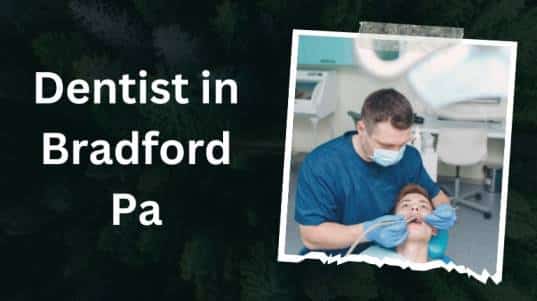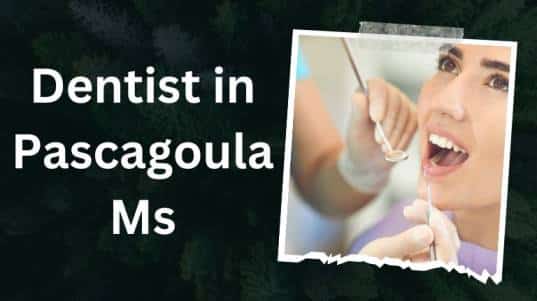Wellcome to barry Goldberg radiologist post. Many People Search about Dr. Barry B. Goldberg like Contact Number, Address, Education Qualification, etc. But They can’t find it, So We share All Details about barry Goldberg radiologist.
Barry goldberg radiologist is a General Radiology specialist in Philadelphia, Pennsylvania. He is a complete medical degree from Perelman School of Medicine at the University of Pennsylvania. Now barry goldberg radiologist works with Jefferson Health-Thomas Jefferson University Hospitals.
Doctor Name: Dr. Barry B. Goldberg
Specialist: Radiology
Experience: 21+ yrs
Doctor Address: Suite 3390, 111 S 11th St, Philadelphia, PA, 19107
Contact Number: (215) 955-6226
Barry Goldberg Radiologist Qualification: Medical School & Residency
Albert Einstein Healthcare Network (Residency, Radiology)
Albert Einstein Healthcare Network (Internship, Transitional Year)
Perelman School of Medicine at the University of Pennsylvania (Medical School)
Affiliated Hospitals Name: Jefferson Health-Thomas Jefferson University Hospitals
Certifications & Licensure:
American Board of Radiology (Certified in Radiology)
PA State Medical License (Active through 2014)
Radiology tests, which you should know
Radiological examination is a test to identify and assist treatment methods. Radiological tests are useful to help doctors see the condition of a patient’s body parts.
Radiological tests are performed using X-rays, magnetic fields, sound waves, and radioactive fluids.
There are a variety of radiological tests, both to diagnose and to assist in treatment, such as:
- Rontgen photo
- Fluoroscopy
- Ultrasonography (ultrasound)
- Mathematical tomography / computerized axial tomography (CT / CAT) scan
- Magnetic Resonance Imaging (MRI) Scan
- Nuclear inspections such as positron emission tomography (PET) scans
The formula of radiological examination
Radiological examinations are divided into two, diagnostic radiology and interventional radiology. Explained here:
Diagnostic radiology
Diagnostic radiology aims to determine the condition of the patient’s organs so that the disease is known by the patient. The following are some of the diseases and conditions that can be detected by diagnostic radiological
examination:
- Tumors and cancers
- Epilepsy
- Infection
- Blisters or pus groups
- Joint and bone disorders
- Digestive diseases
- Respiratory disorders, one of which is COVID-19
- Disorders of blood vessels
- Disorders of the thyroid gland
- Lymph node disorder
- Urinary tract disorders
- Disorders of the nervous system
- Kidney disease
- Alzheimer’s disease
- Lung disease
- Heart disease
- Stroke
Interventional radiology
Interventional radiology is performed to assist physicians with the treatment procedures, such as inserting catheters or inserting small surgical instruments into the patient’s body.
Here are some ways in which interventional radiology can benefit:
- Ring fitting, angiography, and angioplasty
- Placement feeding tube or nasogastric hose
- Tissue sampling (biopsy) of breast, lung, or thyroid gland
- Installation of Central Venus Catheters (CVC)
- Treatment of the spine, such as vertebroplasty and kyphoplasty
- Blood vessel obstruction or embolization to stop bleeding
- Tumor eradication to kill cancer cells
Caution before the radiological examination
There are several things to know before performing a radiological examination, such as:
- Tell your doctor if you are pregnant. Exposure to radiation on CT scans, PET scans, and X-rays can have a negative effect on the fetus. Also, the side effects of magnetic fields on fetal MRI machines are not yet known.
- Tell your doctor if you are allergic to contrast fluids. Differential fluids can be used in some tests to make the image of the patient’s organs clearer.
- Tell your doctor if you have liver and kidney problems. The doctor will limit the amount of infected fluid before the test.
- Tell your doctor if you have implants or metal supports installed on your body, such as prosthetic joints or pacemakers. The presence of these implants can be dangerous for patients undergoing MRI.
- Tell your doctor if you have a tattoo on your body, as some types of dark ink may contain metal, which can be dangerous when doing an MRI.
- Tell your doctor about supplements, herbal products, and the medications you are using. Some types of medications, such as drugs for diabetes, should not be taken before the test because it may affect the test results.
Before radiological examination
Before performing a radiological examination, it is important to follow the doctor’s advice so that the patient gets optimal test results. Depending on the type of radiological examination to be performed, the patient’s
preparation should include:
- Do not perform strenuous activity 1-2 days before the PET scan and follow a specific diet procedure 24 hours before the test.
- Fast 4-12 hours before ultrasound or CT scan, as unconscious food may make the resulting image less clear.
- Taking painkillers, for example in X-ray patients for fracture detection
- Drink enough water and do not urinate until the test is over in patients who want to have an ultrasound
- Starting 24 hours before the PET scan, do not drink anything except Plain water
- Remove all worn items such as jewelry, watches, teeth, and goggles, then put on the special clothing provided
Method of radiological examination
As mentioned earlier, there are different types of radiological tests. Below is a summary of each of the following radiological tests:
1. Photo test Rontgen
X-ray examination uses a machine that emits X-ray radiation to display the interior of the patient’s body in a 2-dimensional image. This visit usually lasts a few minutes.
Depending on the part of the body being examined, the doctor may take pictures of the patient in several positions. In some cases, the doctor will use a contrast fluid to clear the picture of the result.
2. Inspection colonoscopy
Fluoroscopy uses X-rays to show video images of the patient’s body parts. Usually, doctors first perform a fluoroscopic examination with a contrast dye.
Similar to the X-ray examination, the physician may ask the patient to change position to get a clearer picture. The length of the fluoroscopic examination depends on the part of the body being examined.
3. Ultrasound examination (ultrasound)
The ultrasound test conducts high-frequency sound waves to examine the patient’s body parts. When sound waves hit a solid object, such as an organ or a bone in the body
The image of the sound wave will be captured by a device (probe) attached to the surface of the patient’s body and processed into a 2-dimensional or 3-dimensional image by a computer. Ultrasound examination usually lasts 20-40 minutes.
4. CT scan test
CT scans aim to more accurately display images of organs in the patient’s body from different angles. CT scans use an X-ray machine that is supported by a special computer system.
CT scans can show detailed images of body parts that can be combined into 3-dimensional images. The whole episode of a CT scan usually lasts from 20 minutes to 1 hour.
5. MRI examination
Magnetic Resonance Imaging (MRI) aims to produce detailed images of organs in the patient’s body. MRI tests can last from 15 minutes to more than an hour.
MRI uses magnetic fields and radio wave technology to protect it from radiation. Images produced from MRI are more detailed and clear than other types of radiological tests.
6. Inspect KEdokteran NUCL
Nuclear drug tests are performed using machines equipped with gamma cameras. The gamma camera works to detect gamma rays in the patient’s body.
Gamma rays in the patient’s body come from the radioactive fluid that enters the patient before the test. The rays are then processed by the computer into a 3-dimensional figure and can be analyzed by further physicians.
After radiological examination
Here are some things patients need to know after a radiological examination:
- Patients can return to action after the test. However, for patients who are given decent substances before the test, family or relatives are advised to pick them up and take them home.
- Diseases such as interventional radiology, such as vascular catheterization, require hospitalization for several days where the catheter is in the hand or foot.
- The radiologist will analyze the test results. Patients will be able to know the results of radiological tests on the same day or a few days later. If necessary, the doctor will advise the patient to undergo blood tests or other radiological tests for a more accurate diagnosis.
- If radiological examination results are found in the disease, the doctor will ask the patient to treat it immediately.
- Patients undergoing PET scans and nuclear drug tests need to drink plenty of white water to pass through the radioactive liquid urine.
Complications of radiological examination
Radiological examination is a safe procedure and rarely causes complications. However, there are still some risks that can go through the radiological examination, such as:
Nausea, dizziness, and a metallic sensation in the mouth
Contrast fluids given in radiation tests can cause nausea, itching, dizziness, and a metallic taste sensation in the mouth. In patients with renal impairment, in contrast, fluid intake may also lead to acute renal failure.
Blood pressure drops
Although rare, fluids, in contrast, can cause severe drops in blood pressure, anaphylactic shock, and even heart attacks.
Increases the risk of cancer
A one-time CT scan continues to be safe for patients. However, repeated CT scans can increase the risk of cancer due to radiation, especially in the case of pediatric patients who have a CT scan of the chest or abdomen.
Wounds and AIDS are damaged
The magnetic field in an MRI machine can attract metals. Therefore, injuries can occur if the patient forgets to remove the jewelry before the MRI. MRI magnetic fields can damage the body’s AIDS as well as pacemakers.


